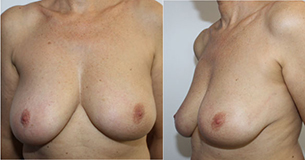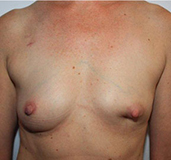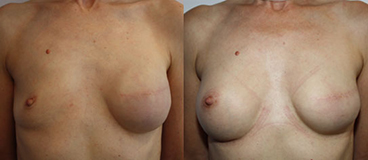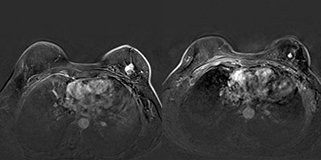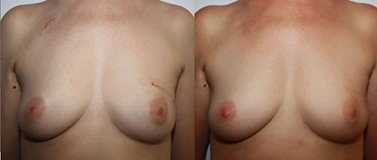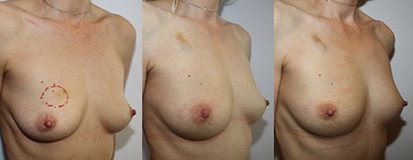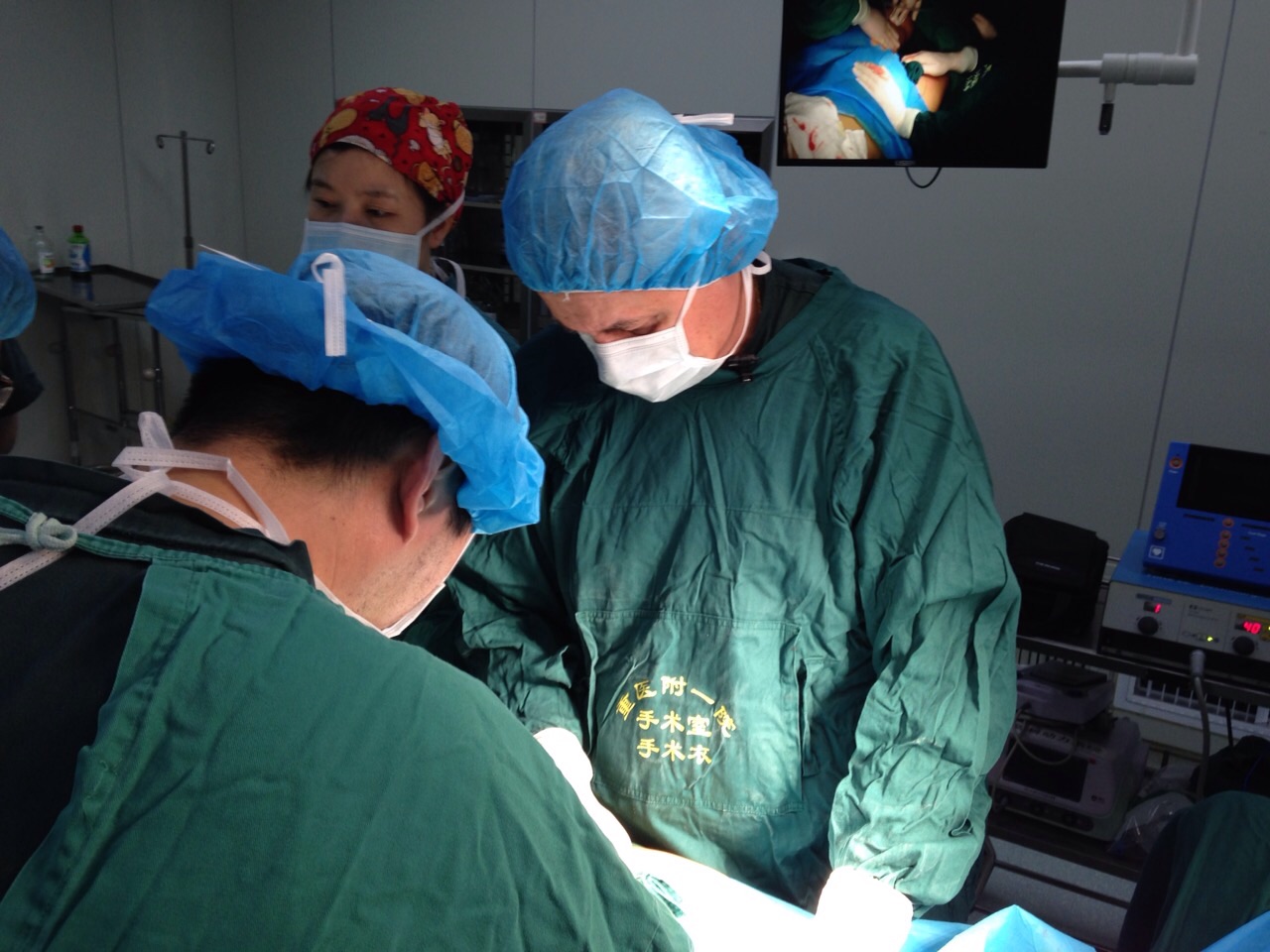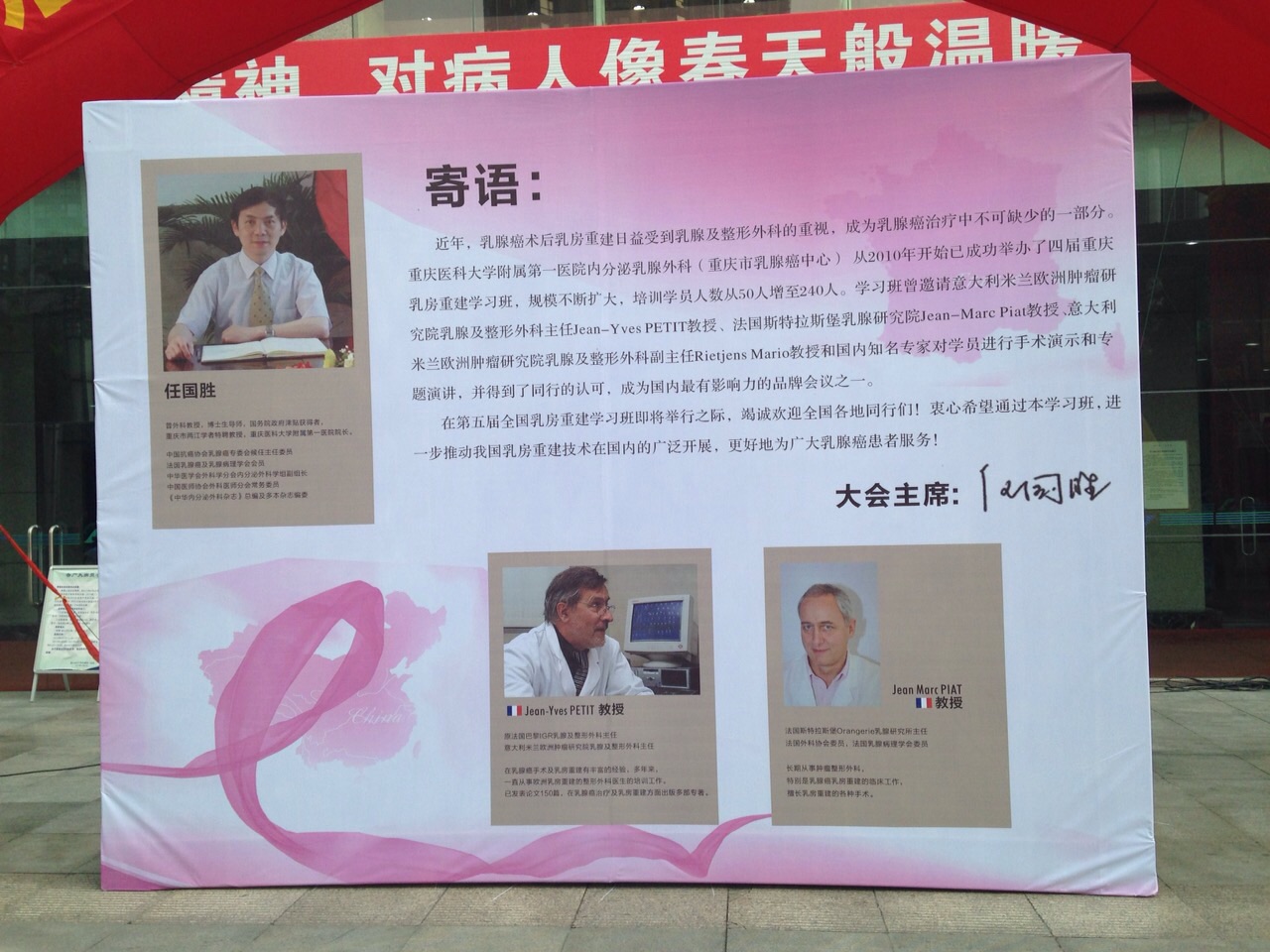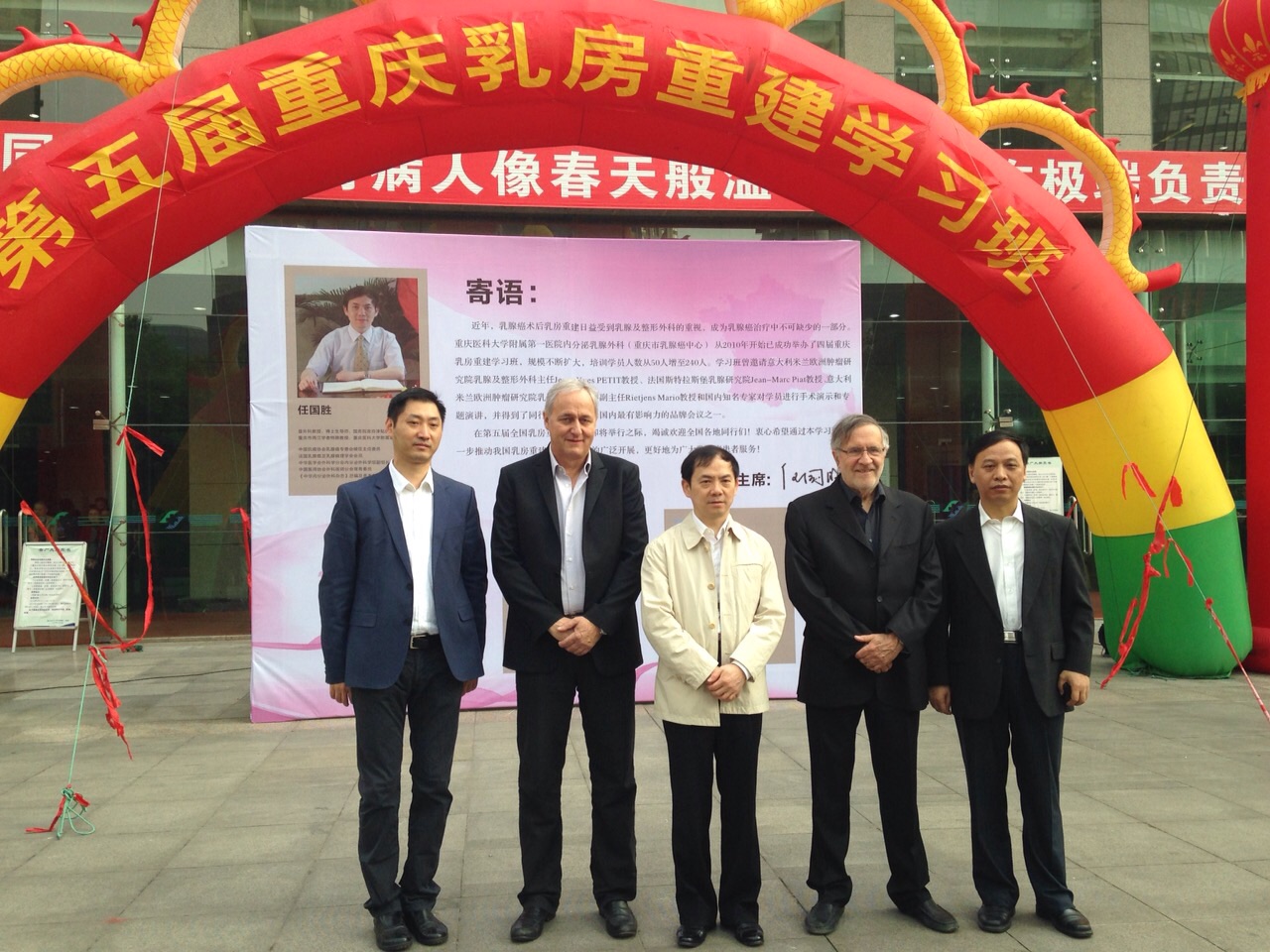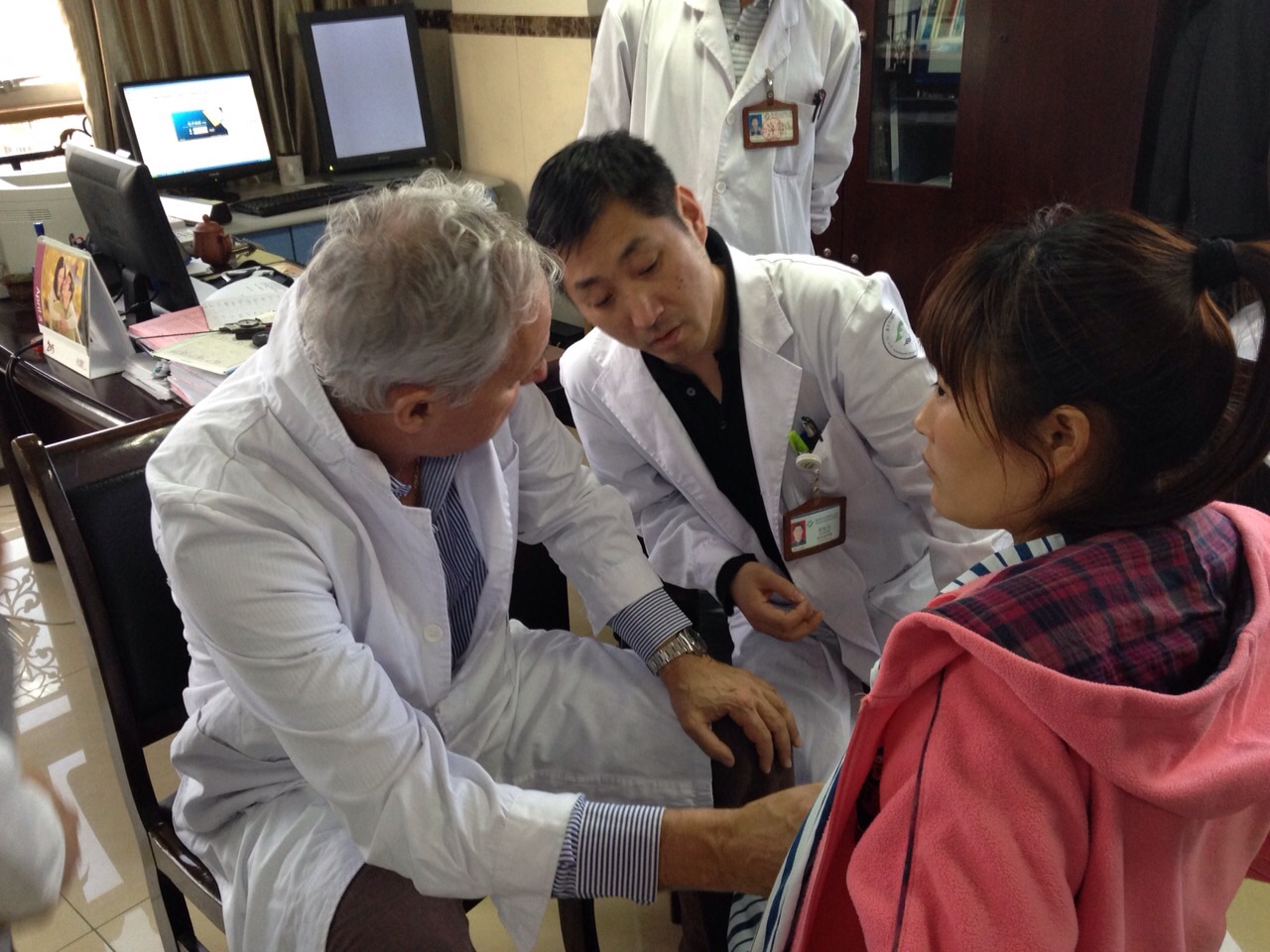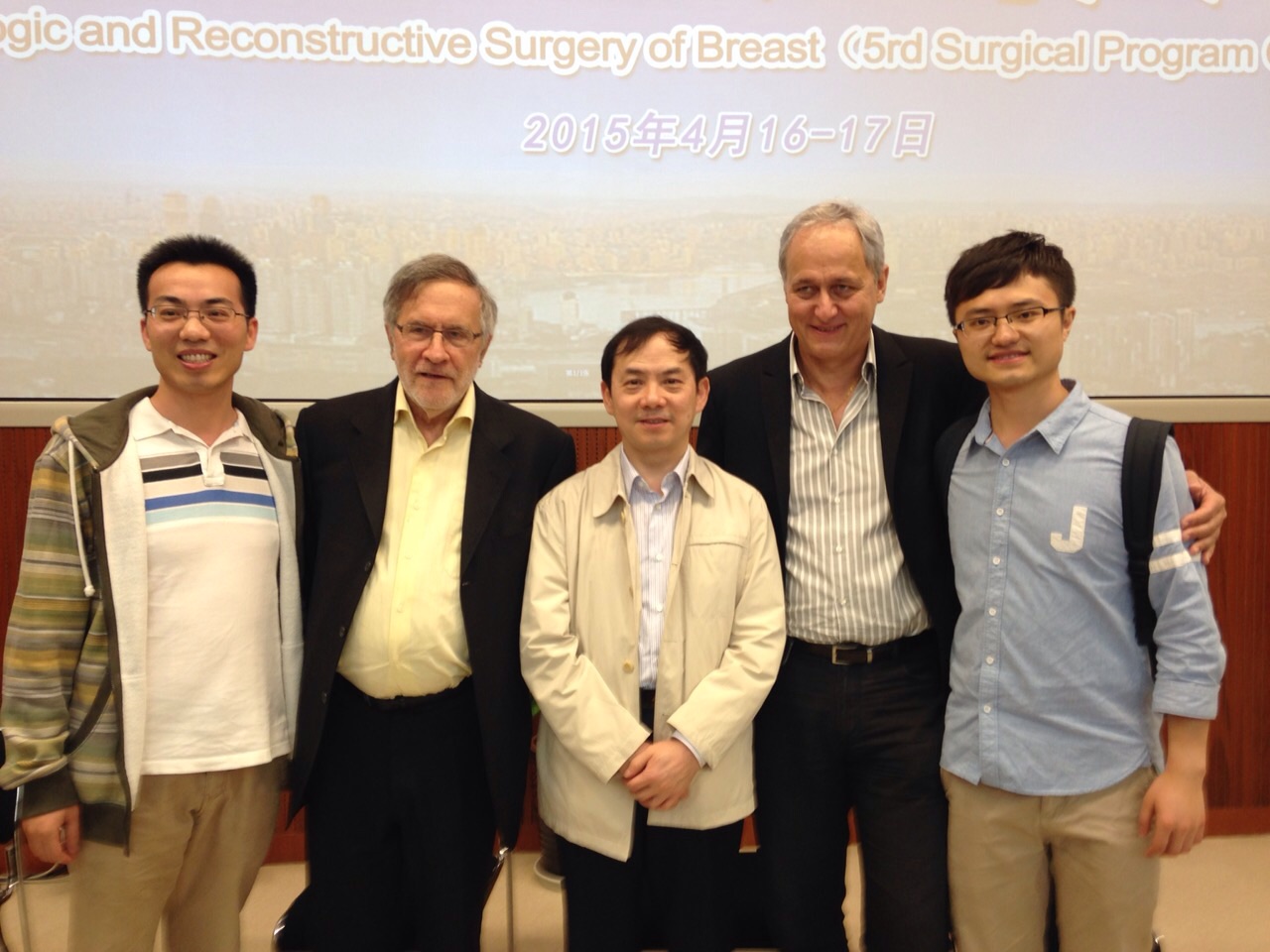In the 1990s appeared oncoplastic (the use of mammoplasty techniques in the breast cancer surgery). This enables in some cases the improvement of conservative treatment through indirect incisions with glandular flaps. It also permits to widen breast preservation possibilities, especially when resorted to after CNA chemotherapy for lesions that were initially of large volume.
Direct incisions are most of the time used in the upper external region of the breast (50% of breast cancers locations)
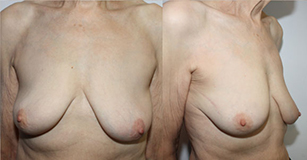
From Left to Right :
Result after conservative treatment of a right external cancer of 20 mm
Inconspicuous scar without esthetic sequels on the breast
Direct incisions are not indicated when breasts have too much fat (due to the risk of fat necrosis). When the breast is glandular, they are very useful to avoid apparent scars on the neckline.
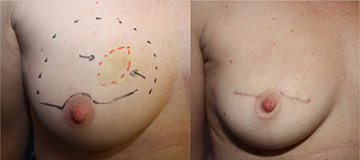
From Left to Right :
25mm upper-internal lesion on the neckline
Result after surgery and a peri-areolar incision
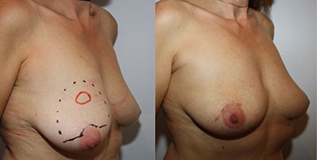
From Left to Right :
20mm upper-medial lesion on the neckline
Unconspicuous result after surgery and peri-areolar incision
They also permit, through Round Block technique, to resect tumors in any location with optimal result. This technique however requires quite large areolas.
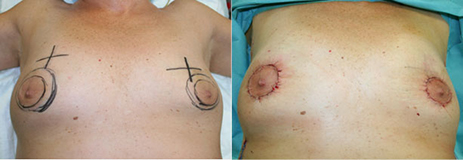
From Left to Right :
Upper-internal cancer on both breasts
Result after Round Block
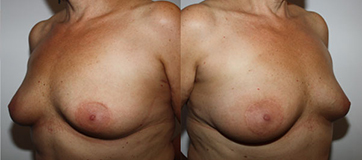
From Left to Right :
Final result after radiotherapy from the left side
Final result after radiotherapy from the right side
The tumor’s location can sometimes be an obstacle to breast preservation, as it is the case for lower-internal tumors. A direct incision might leave sequels, even in the case of small tumors.
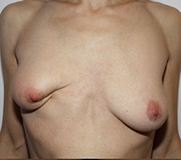
Lower-internal location, important sequels of conservative treatment without oncoplastic
Oncoplastic techniques have helped to expand conservative treatments possibilities in that location.
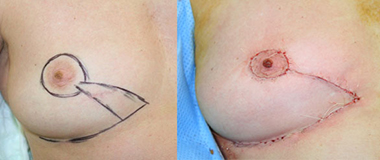
From Left to Right :
Lower-internal location: resection with infra mammary incision permitting a flap
Result after dermal flap with Round Block

From Left to Right :
Lower-internal cancer before surgery
After surgery and radiotherapy
Unconspicuous scar even with arms raised
As the treatment of a lower-medial lesion might leave sequels without associated oncoplastic, in particular on ptosed breasts.
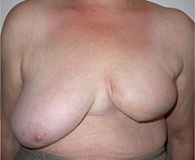
Inferior location: important sequels of conservative treatment without oncoplastic
In that situation, the realization of a mammoplasty at the same time is ideal, as it enables a very large resection and an excellent final result.

From Left to Right :
Lower-medial cancer
Aspect before surgery
Final result after radiotherapy
In the case of a retro-areolar tumor, resorting to a plasty with cutaneous plug may allow breast preservation. The breast needs to be large enough,
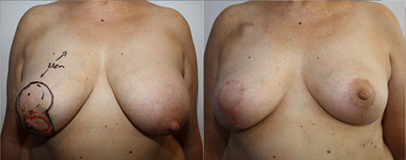
From Left to Right :
Retro-areolar tumor before surgery
After surgery and radiotherapy
or ptosed,
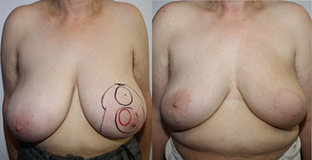
From Left to Right :
Retro-areolar tumor before surgery
After surgery and radiotherapy
taking into account a possible asymmetry.
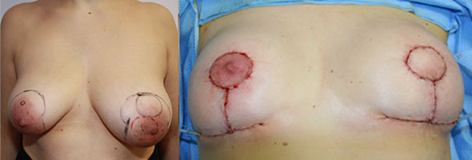
From Left to Right :
Retro-areolar tumor before surgery
Result after surgery
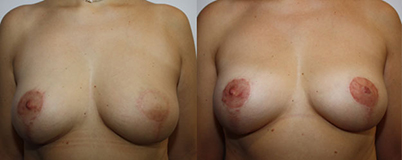
From Left to Right :
After surgery and radiotherapy
After areola and nipple reconstruction
In the case of breast hypertrophy, basic conservative treatment associating a resection without oncoplastic followed by radiotherapy can often lead to a post-treatment inflammation with rash, edema and pain that might become chronic and disabling for the patient.
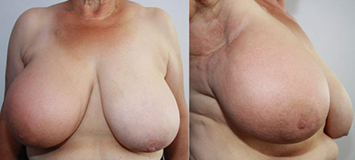
From Left to Right :
Upper-external cancer post-treatment inflammation Frontal view 2 years after treatment
Associated axilar sequels view from the side
A reduction associated with the tumor resection has a triple advantage. It enables to improve the functional and esthetic result of the surgery, ease the radiotherapy and diminish the post-radiation sequels. Realized using a superior pedicle, it is perfectly adapted to lower location tumors.

From Left to Right :
Lower-external cancer
Aspect before surgery
Result 15 days after surgery
Reduction through this superior pedicle technique can be done wherever the tumor location is found, as long as there is no skin adhesion.
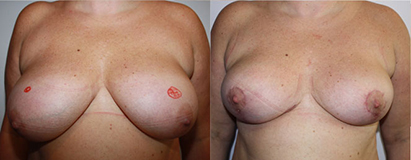
From Left to Right :
Upper-medial cancer on both breasts
Result after 1 month
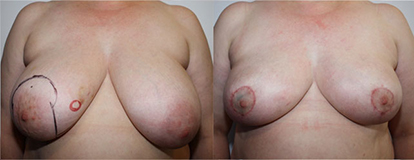
From Left to Right :
Internal cancer
Result after 6 weeks
The reduction is to be offered systematically at the time of the cancer treatment, especially since it would be very difficult to achieve after radiotherapy (major risk of post-operative complications after reduction of an irradiated breast).

 English
English
 Français
Français
 中文 (中国)
中文 (中国)
 Español
Español
 Português (BR)
Português (BR)
